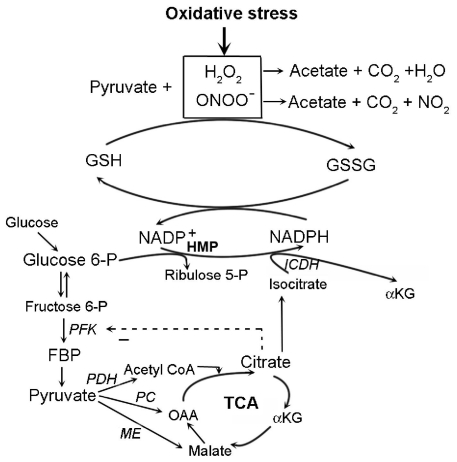Figure 3.
Several key reactions are shown that depict the antioxidant roles of pyruvate and FBP. Hydrogen peroxide and peroxynitrite, shown at the top of the diagram, are reactive oxygen and nitrogen species formed during oxidative stress. One antioxidant mechanism of pyruvate is associated with the keto-carbonyl group that can scavenge peroxides and peroxynitrites in direct decarboxylation reactions. The antioxidant role of keto-carbonyl groups in metabolites would help relieve the free radical burden handled by the GSH system. Pyruvate can indirectly help maintain reduced glutathione (GSH) instead of oxidized glutathione (GSSG) by increasing NADPH production. Pyruvate carboxylation by pyruvate carboxylase (PC) and/or malic enzyme (ME) increases the formation of citrate, which can suppress phosphofructokinase (PFK) activity, and drive glucose-6-phosphate into the hexose monophosphate pathway (HMP); or it can generate isocitrate, the substrate for NADP+-dependent isocitrate dehydrogenase (ICDH).

